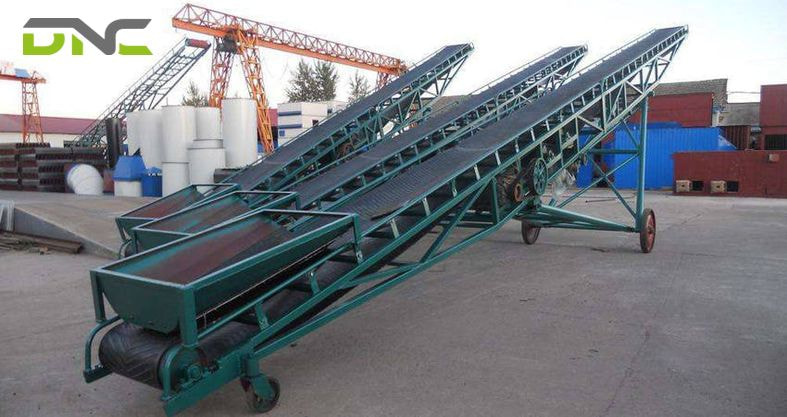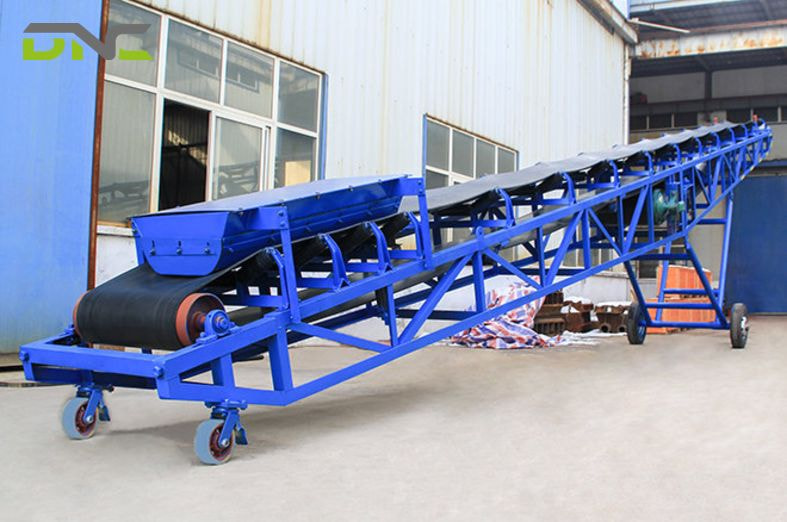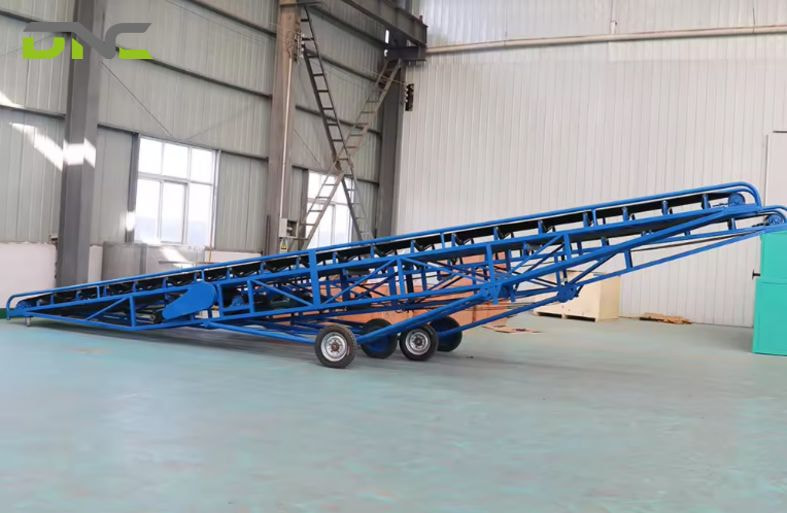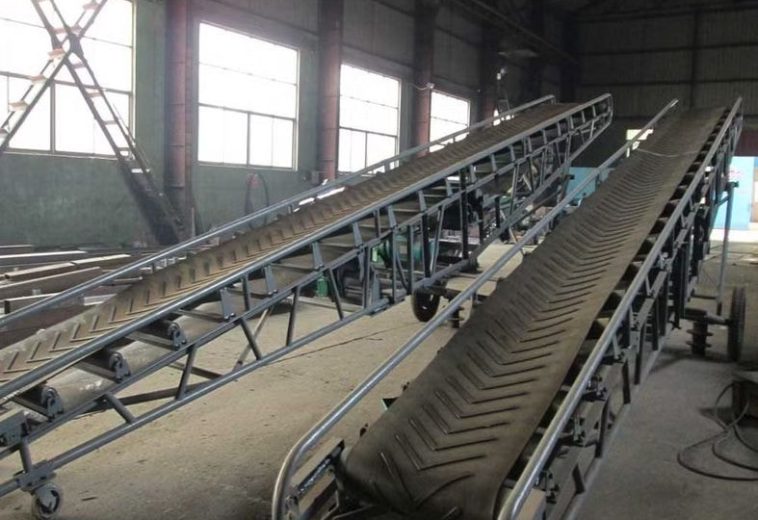Overview of portable conveyors – things about Portable Conveyors you may not know
What is the Portable Conveyor? Portable conveyors are essentially mobile conveyor systems designed to move materials easily. Unlike fixed conveyors that are permanently installed in a facility, mobile conveyors are built to move around a warehouse, deliver materials to a job site, or adjust their position within a work area.
Portable conveyors are typically quite simple in construction, consisting of a frame, a belt, a drive system, and wheels or rollers for easy transport. They are easy to set up quickly, require minimal maintenance, and can be adapted to a variety of work environments.
What are the advantages of the portable conveyor?

What are the advantages of the portable conveyor?
Portable conveyors offer many practical benefits, making them a popular choice in various industries. Here are the top highlights:
- High Mobility: Portable conveyors can be easily moved to any location within the work area. This saves time, reduces manual labor, and increases work efficiency. You are not dependent on a fixed location with a conveyor.
- Easy to Install: Most portable conveyors can be put into use within minutes of being delivered to a construction site or warehouse. This reduces downtime (downtime) and allows for smooth operations.
- High Flexibility: We can handle a wide range of materials from packaged goods in a warehouse to sand, gravel, and rock on a construction site. This makes mobile conveyors an extremely versatile piece of equipment.
- Space-saving: Many portable conveyor models can be folded or collapsed when not in use. This is especially helpful for businesses with limited working hours.\
With these outstanding features, the mobile conveyor is not only a device that brings many benefits but also a smart solution to optimize work performance, save costs, and ensure safety for workers.
How is a portable conveyor constructed?

How is a portable conveyor constructed?
The portable conveyor is a simple device, but its efficiency is extremely amazing. The device has a unique structure with remarkable components such as: frame, conveyor belt, transmission system, and trolley wheels…. The combined parts have created an effective operating device.
- The frame is usually made from lightweight but durable materials such as aluminum or stainless steel, The frame is the backbone of the system. The frame is designed to be sturdy but easy to move.
- The conveyor belt is made from a variety of materials, it can be made from rubber, PVC, or other synthetic materials, depending on the type of material being moved. This part is wrapped around the rollers and driven by a motor.
- Drive system – Most mobile conveyors are powered by electric motors. Some models may even have adjustable speeds or run on batteries for more convenience, but in general, electric drive systems are still the most popular today.
- Casters or caster wheels provide mobility to the unit. This is what sets these conveyors apart. Sturdy casters or caster wheels make it easy to roll the unit into place and lock it in place during operation.
Despite their compact size, these conveyors are built to handle surprisingly heavy workloads and can be customized to fit specific job requirements.
Are portable conveyors expensive or cheap?

Are portable conveyors expensive or cheap?
Whether a portable Conveyor expensive or cheap? That is one of the most common questions people ask. But it is difficult to give a fixed price for manufacturing equipment, as it depends on the needs of the user and the scale of their production. However, we can still estimate the price of this equipment because, compared to fixed conveyor systems, portable conveyors are often more affordable from the start. They do not require extensive installation, and their modular design often reduces maintenance costs.
Price range:
- Small/light models: $1,000 – $3,000
- Medium-duty conveyors: $3,000 – $7,000
- Heavy-duty industrial systems: $8,000 and up
If you need a temporary or flexible solution, portable conveyors can be a smart investment that will save you time and labor costs in the long run. For small businesses or short-term projects, renting is also an economical option.
Where are portable conveyors commonly used?

Where are portable conveyors commonly used?
Portable conveyors are very versatile in a variety of applications, including construction sites, warehouses, agricultural production plants, and more.
- In construction, they are often used to move heavy materials such as concrete, crushed stone, and soil. Their ability to move over uneven terrain makes them especially useful in outdoor or remote locations.
- In warehouses and distribution centers, portable conveyors help streamline order fulfillment by moving packages between processing areas or loading docks. Their mobility allows them to be positioned where they are needed most, ideal for high-volume operations that require speed and flexibility.
- In agriculture, they are used during harvest to transport crops such as grain, corn, or hay, often directly from the field to a truck or storage facility.
Even event companies and temporary businesses are starting to use them to transport equipment quickly and efficiently. Simply put, wherever there is a need to move materials efficiently without the commitment of fixed infrastructure, mobile conveyors provide a reliable solution.
What to consider when choosing a portable conveyor?

What to consider when choosing a portable conveyor?
Choosing the right portable conveyor is not just about choosing the cheapest option, but also about finding a model that fits your business needs while still ensuring performance. Some things to consider when investing in a portable conveyor:
- What type of material will you be transporting, which includes light items like boxes or heavier materials like gravel or cement? This will determine the type of conveyor, motor power, and overall durability you need.
- Consider size – longer conveyors are great for spanning large spaces or multiple workstations, while wider conveyors can accommodate larger or bulkier materials.
- Height and incline adjustment: If your operation involves moving materials between different heights, this feature becomes essential.
- Maintenance: choose a model that allows easy access to parts for quick cleaning or repairs. A well-maintained conveyor can serve your operation for many years, making it a valuable long-term investment.
- 1 views
- 0 Comment




Recent Comments